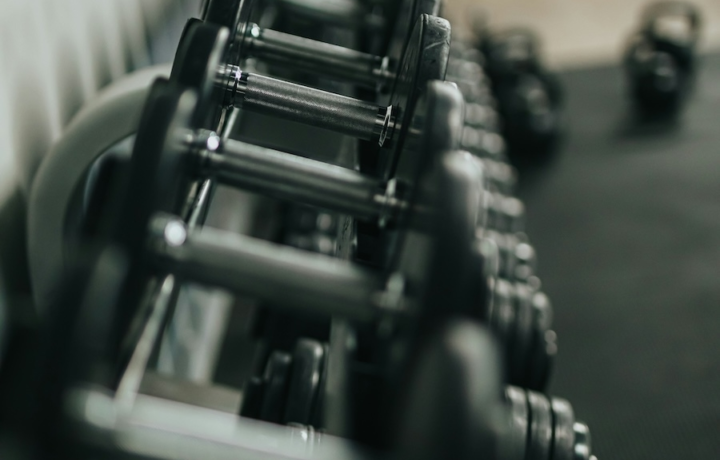Exercise
Cable Leaning Lateral Raise

Cable Leaning Lateral Raise
How to Perform
- Set up a cable machine with the pulley at the lowest position and attach a D-handle.
- Stand sideways to the cable machine, grab the handle with your outside hand, and take a step sideways to create tension in the cable.
- Position your feet shoulder-width apart and lean slightly away from the machine, using your body weight as counterbalance while maintaining a neutral spine.
- Keep your arm slightly bent (not locked) with the elbow soft and maintain this position throughout the movement.
- Inhale, then exhale as you raise your arm out to the side in a controlled arc motion until your hand reaches shoulder height.
- Maintain a slight forward tilt of your torso while bracing your core to prevent rotation during the movement.
- Pause briefly at the top position, focusing on the contraction in your lateral deltoid.
- Slowly lower the weight back to the starting position with control, inhaling during this eccentric phase.
Important information
- Keep your wrist neutral (not flexed or extended) throughout the entire movement to prevent strain.
- Make sure your shoulder stays down and away from your ear during the exercise to target the deltoid properly.
- Control the movement speed, especially on the way down, to maximize tension on the lateral deltoid.
- If you feel any strain in your neck or traps, reduce the weight and focus on isolating the shoulder muscle.

Cable Leaning Lateral Raise
Exercise Details
Primary Muscles
Muscle Groups
Mechanic
Risk Areas
Built for progress
Take the guesswork out of training
Create personalized AI-powered workout plans that evolve with you. Train smarter, track every rep and keep moving forward, one workout at a time.






The Cable Leaning Lateral Raise stands as a stellar intermediate-level movement for bodybuilders and strength enthusiasts looking to sculpt impressive shoulders. This exercise primarily targets the side delts while also engaging the front deltoids, creating that coveted shoulder width and definition that transforms an ordinary physique into an extraordinary one. What makes this variation particularly effective is the constant tension provided by the cable mechanism. Unlike traditional dumbbell lateral raises where tension decreases at certain points in the range of motion, cables maintain consistent resistance throughout the entire movement, forcing your deltoids to work harder from start to finish.
For bodybuilders seeking that detailed shoulder separation and cap-like appearance to the deltoids, the leaning aspect of this exercise creates a unique angle of resistance that can help break through plateaus when standard lateral raises no longer produce results. The slight forward lean removes some of the potential for momentum and body English that often creeps into standing variations. Strength-focused lifters will appreciate how this exercise builds stabilizing strength throughout the shoulder complex. The unilateral nature of the movement reveals and addresses imbalances between your dominant and non-dominant sides – a crucial factor for overall shoulder health and performance in pressing movements.
When incorporated into your training split, consider placing this exercise after your heavy compound pressing movements but before smaller isolation work. This strategic positioning allows you to hit your side delts with significant intensity while they're still fresh enough to handle challenging loads, but after you've warmed up the shoulder complex with bigger movements. For optimal shoulder development, most trainees find success with moderate rep ranges of 10-15 repetitions per set, focusing on quality contractions rather than excessive weight that compromises form. Remember that shoulder hypertrophy often responds better to proper execution than sheer loading: a principle that makes the Cable Leaning Lateral Raise particularly valuable in your shoulder training arsenal.
FAQ - Cable Leaning Lateral Raise
This exercise primarily targets the lateral (side) deltoids while also engaging the anterior (front) deltoid heads and upper trapezius as secondary muscles. The leaning position creates a unique angle that maximizes lateral deltoid activation compared to standard lateral raises.
Set a cable pulley to its lowest position and grab the handle with one hand. Position yourself perpendicular to the cable station, leaning away from the machine while maintaining a straight arm position. Your free hand should grip a stable surface for support, with feet positioned for optimal balance.
Increase difficulty by pausing for 1-2 seconds at the top of each rep, slowing down the eccentric (lowering) phase, or performing drop sets when you reach muscle failure. For advanced lifters, you can also try performing the movement without holding onto support to engage more core stabilizers.
The three most critical errors are allowing the hips to sag (losing the pike position), shoulders rolling forward (compromising joint safety), and excessive body wobbling due to poor core bracing. Focus on maintaining a straight line from hands to hips, keeping shoulders packed away from ears, and engaging your core throughout the movement.
Include this exercise 1-2 times weekly as part of your shoulder or upper body training. For optimal results, perform 3-4 sets of 10-15 reps per side after your heavy compound movements but before smaller isolation exercises, allowing 48-72 hours for shoulder recovery between sessions.






